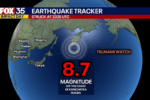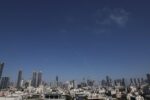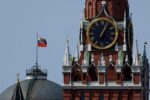Oil price stable despite new taxes

Prices of petroleum products will remain low despite the additional 10 percent tax on crude and petroleum products aimed at helping the government augment funding in the fight against the coronavirus disease 2019.
President Rodrigo Duterte signed Executive Order 113 on 2 May 2020 temporarily imposing the additional import tax.
However, the additional tax will reflect in price adjustments only after oil companies have exhausted existing inventories that have been purchased prior to the issuance of EO 113.
Based on inventory reports, added costs might be included later this week.
Cumulative rollbacks from January 2020, to date, stand at P6.72 per liter for gasoline, P9.99 per liter for diesel and P13.69 for kerosene.
Department of Energy Secretary Alfonso Cusi has directed the DOE-Oil Industry Management Bureau (OIMB) to ensure the proper implementation of the additional tax.
“Upon the release of EO 113, our Oil Industry Management Bureau immediately met with industry stakeholders to discuss the way forward, including their strict compliance with the EO’s guidelines,” Cusi said.
Shell Philippines has reported that 644 of their liquid fuel retail outlets have implemented the tariff adjustment for diesel products only. Adjustments this week will reflect upward developments in the global oil markets.
Under EO 113, the temporary imposition of additional tariffs will immediately revert to zero upon the certification of the DOE that a trigger price has been reached, or when Dubai Crude reaches $64 per barrel.
“Protecting our consumers is always our top priority. We will not allow any unfair practice to derail consumer interests, especially given the challenges we continue to face in the midst of the pandemic,” stressed Cusi.
Meanewhile, oil-production limits adopted by a group of major crude suppliers will soon bring prices back to “normal,” according to the energy minister of the United Arab Emirates.
When markets were collapsing as the coronavirus pandemic crushed demand in March and early April, the idea that crude could rise again to $40 a barrel was “a dream,” Suhail Al Mazrouei said during a conference call on Monday. That was before the Organization of the Petroleum Exporting Countries (OPEC+) alliance agreed unprecedented cuts in output.
Prices could return to “normal” within a year or two as curbs approaching 10 million barrels a day drain excess barrels from the market, Mazrouei said during the call hosted by the Atlantic Council, a Washington-based research institute.
“We have seen very good signs of demand picking up,” Mazrouei said. “We have seen numbers of driving vehicles are picking up,” he said, citing demand growth in China, India and Europe.
Still, the direction of oil prices will hinge to a large extent on whether a second round of infections forces economies into lockdowns once again, Mazrouei said.
“Are we going to have a second wave or not?” he said. “I hope not. I hope we’re not going to limit travel and we will go back to at least a consumption level that is reasonable. Now we are back to the consumption level of 2013, believe it or not.”
Mazrouei didn’t specify what he meant by “normal” prices. However, benchmark Brent crude averaged about $64 a barrel last year. OPEC+ producers negotiated cuts in April to counter the pandemic’s impact and this month extended the reductions through July. (With reports from Tribune and Bloomberg)






